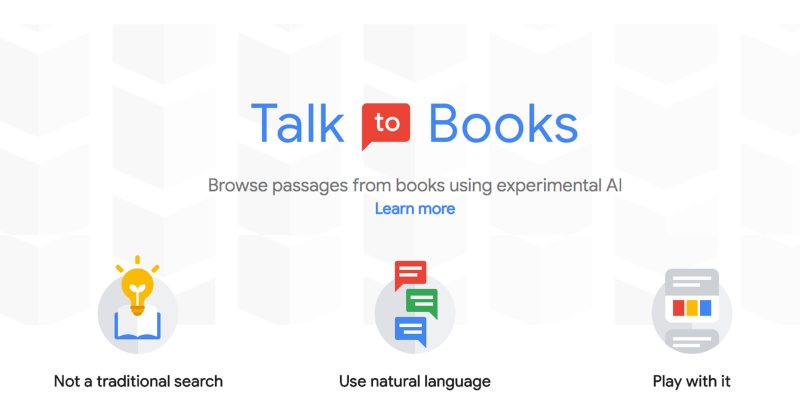

In Talk to Books, when you type in a question or a statement the model looks at every sentence in over 100000 books to find the responses that would most likely come next in a conversation. The response sentence is shown in bold along with some of the text that appeared next to the sentence for context.
How It Works
How does a computer understand you when you talk to it using everyday language?
Our approach was to use billions of lines of dialogue to teach an AI how real human conversations flow.
Once the AI has learned from that data it is then able to predict how likely one statement would follow another as a response. In these demos, the AI is simply considering what you type to be an opening statement and looking across a pool of many possible responses to find the ones that would most likely follow.
The technique we are using to teach computers language is called machine learning. Google Machine Learning Glossary defines machine learning as:
"...a program or system that builds (trains) a predictive model from input data."
What does that mean for us?
Input data: The input data is a billion pairs of statements where the second statement is a response to the first one.
Predicting: We are predicting the response to a question or a statement. After seeing all those pairs of sentences and responses the AI learns to identify what a good response might look like.
Model: The trained system that is used for making predictions. After training, our model is able to pick the most likely response from a pool of options.
In Verse by Verse, you are given the opportunity to compose poetry in collaboration with classic American poets like Walt Whitman Emily Dickinson Edgar Allen Poe and many more. These poets will act as your muses, making suggestions of verses as you write a poem.
In this application there are two models at work. One model, a generative model was trained on classic poetry in order to learn how to create novel verses in the style of our cadre of poets. The other model, which uses the same semantic understanding technology as our other applications, was trained to semantically understand which verses best follow the previously written line of verse.
Enjoy trying to write poetry with different poets. Each poet has their own individual style. You will probably find most enjoyment when you treat the poets as partners going back and forth with your own verses and their suggestions. Feel free to write your own verses, use their suggestions or use the suggestions even as inspirations as you write your own.
Please keep in mind that Verse by Verse is an experiment in how to use machine learning as a creative partner. You may encounter some issues and oddities with the response it generates. If you encounter bugs, please use the feedback tool which you will find in the upper right hand corner (an exclamation point in a word bubble).